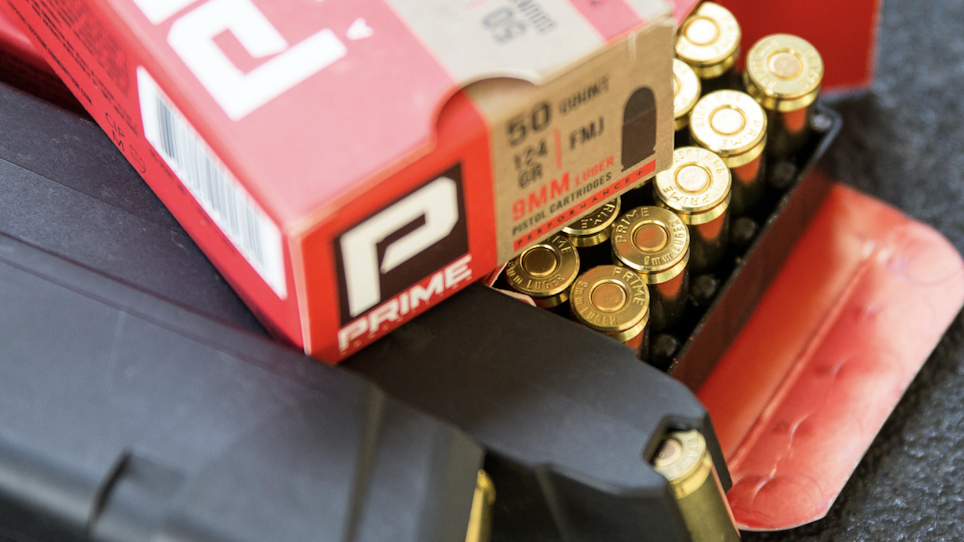Have you ever wondered why you can use ammunition from any manufacturer in any firearm, so long as they are the same caliber? The answer is that the industry has standards that are established and managed by the Sporting Arms and Ammunition Manufacturers’ Institute (SAAMI). The core of its mission is to ensure that a cartridge is the right size, shape and composition to fit into, and safely fire from, a firearm’s chamber that is the right size, shape and composition.
The precursor to SAAMI, the Society of American Manufacturers of Small Arms and Ammunition (SAMSAA), was founded in 1913 just prior to WWI at the request of the U.S. government. The War Department envisioned an industry organization that could establish an exchange of technical information between U.S. factories producing military arms and ammunition. In the early 1920s, SAAMSA ceased to exist and the idea was not revived until 1926, at the urging of the Commerce Department. SAAMI was initially created to cut the number of obsolete black powder rifle and shotgun shell loads, which it did. The industry team reduced the number of metallic cartridge loads by 70 percent and shotgun shell loads by 95 percent.
SAAMI also became involved in wildlife management and, in the 1940s, published myriad booklets educating shooters on the safe and responsible use, handling and storage of firearms, ammunition and components for reloading of ammunition, as well as The Ten Commandments of Safety, Published in the Interest of Making and Keeping Shooting a Safe Sport.
In 1961, SAAMI established an independent firearms industry group named the National Shooting Sports Foundation that still exists to this day. It hosts the annual Shooting, Hunting and Outdoor Tradeshow (SHOT Show) in Las Vegas.
The 1970s saw a major transition in testing that included moving from the copper crusher chamber pressure measurement system (CUP) to the modern piezoelectric transducer chamber pressure measurement system (PSI) and the establishment of the first five American National Standards Institute (ANSI) performance standards for ammunition.
In the 1980s, SAAMI established standards to simplify shipping of ammunition and created training for firefighters who might face fires containing ammunition and its components. Today, SAAMI continues setting standards for safety, interchangeability, reliability and quality, coordinating technical data and promoting safe and responsible firearms use.
What’s interesting about this is that the industry regulates itself, rather than being overseen by a federal government agency. Sure, manufactures must possess licenses to make ammunition, but the Bureau of Alcohol, Tobacco, Firearms and Explosives doesn’t have a permanent monitor in each facility.
Only SAAMI members are bound by its guidelines. Conversely, manufacturers who choose not to abide by SAAMI standards open themselves to liability, but SAAMI Voting and Associate Membership is open to any domestic primary manufacturer producing and selling within the United States, or domestic designing firm or corporation causing to be manufactured to its basic design and selling within the United States under its own name.
SAAMI also publishes a list of Unsafe Arms and Ammunition Combinations detailing situations where certain cartridges may fit in firearms designed for a different cartridge, but would be unsafe to use.
In order to fulfill its mission, SAAMI is made up of several committees, each handling a different aspect of its responsibilities.
Technical
This is the heart of what SAAMI does, establishing product standards for firearms and ammunition via its two Product Standards Task Forces — Ammunition and Firearms. This is where chamber drawings and proof loads are created.
Logistics and Regulatory Affairs
The SAAMI Logistics and Regulatory Affairs Committee (SLARAC) works closely with domestic and international regulatory bodies including the Federal Departments of Commerce, State, Transportation, Labor, Homeland Security and Justice.
In addition, SLARAC participates in the development of industry standards through its membership in the following organizations:
International Code Council
International Fire Code
National Fire Protection Association
Dangerous Goods Advisory Council
International Society of Explosive Engineers
Legal and Legislative
This committee is responsible for tracking developments at the state and federal level in the field of product liability law and legislation that impact the design, manufacture and sale of firearms, ammunition and propellants by SAAMI member companies. It also proposes legislation consistent with SAAMI’s mission.
United Nations
In 2005, SAAMI was accredited as a United Nations Economic and Social Council (ECOSOC) Non-Governmental Organization with consultative status.
There is also an international counterpart to SAAMI called the Commission Internationale Permanente pour l’Epreuve des Armes à Feu Portatives (French for “Permanent international commission for testing portable firearms”). Unfortunately, the two organizations sometimes establish conflicting European and American ammunition and chamber dimensions and maximum allowed chamber pressures. These are generally referred to as “Delta L” or “difference in length” problems.
For more a century, SAAMI, and its predecessor, has established and maintained industry standards for the safe production and use of firearms and ammunition. Their influence is also felt internationally in the areas of interoperability, safety and shipping.






